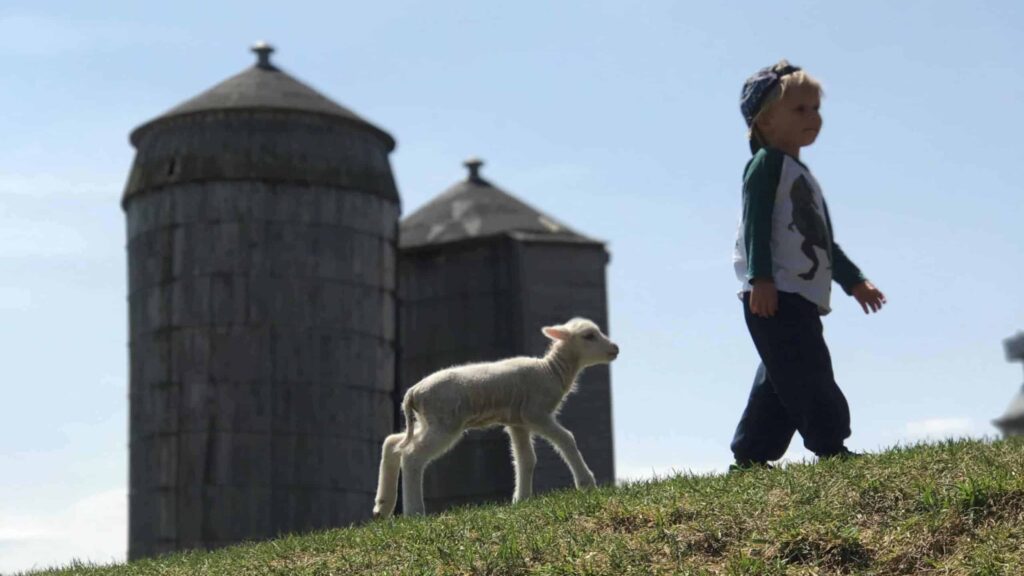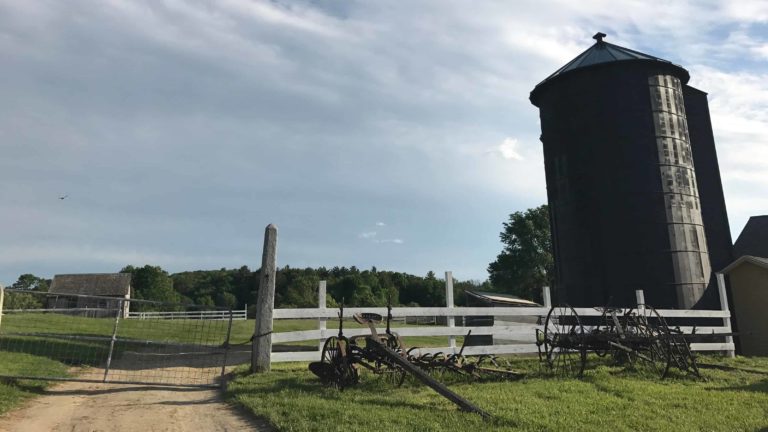Hancock Shaker Village welcomes visitors to meet their newest farm babies – lambs, piglets, calves, chicks and kid goats, and enjoy events and activities throughout the Village.
SEE EVENT
From 1783 to 1960, a Shaker community lived and farmed here — as many 300 people tended 29 kinds of apple trees, turkeys and chickens and merino sheep. They made rosewater and ash baskets and worked with wood and iron.
Today the village is a living history museum known for its Round Stone Barn, with farm animals and CSA gardens, art and craft, and dinners and music. Walk through the water-powered woodshop, forge, kitchen and gardens and see how the community lived together.
The museum also hosts events year-round — farm dinners with thinkers and writers, concerts and folk music festivals, and makers’ days passing on the traditions of spare Shaker design. And in the spring the barns fill with lambs and chicks, kid goats and piglets and calves.
The Shakers lived by their faith. They danced and sang, and got on day to day, with the men on one side of the room and women on the other. They offered refuge and respect, equality and integrity. And they believed beauty and usefulness should go together.

HSV explores Shaker beliefs and design through contemporary art, including an installation in the silo of music composed by Brad Wells, director of the Grammy-winning ensemble Roomful of Teeth (founded in the Berkshires).

odd Burdick picked up a lamb and put her into my arms. She looked out over my elbow, wool short and curled against her skin, and I cupped a hand under her back legs to support her. Her feet felt as small as the ball of my thumb and not yet fully hardened.
She (or maybe he) and her distracted mother visited the village in the spring at the annual return of the monthlong festival, Baby Animals on the Shaker Farm. When I met her, we were standing in the ell off the Round Stone Barn.
When we walked in, the air lightened. Jersey calves looked up questioningly. Burdick and Mangiardi hopped in and out of pens, easy and cheerful and always careful.
A teenaged boy listened bemusedly to the chick warbling on his baseball cap, and a mother of two wondered just how tiring it is to feed 16 piglets at once, if you’re the sow.
You can visit other farms, Mangiardi said, but here you can get to know the animals. They’re set up for it. He runs two farms besides this one, and he knows what he’s talking about: many farmers are friendly and passionate about teaching people what farms really are, but they have long days and farmyards full of tractors, and they’re not equipped to deal with 16,000-odd visitors in a month.
Here, Burdick and Mangiardi have a lot of practice at introducing people to piglets and ducklings.Having a lamb handed to you as easily as a loaf of bread is a gift. You’re holding a real, living lamb, and you’re aware how fragile it is, and now it’s familiar. My grandparents have a farm, and I’ve met lambs and kid-goats up close; I’m lucky. But I’ve never had someone casually set a chick on the palm of my hand, a downy Rhode Island Red baby just getting its first wing feathers, spreading its toes between my fingers.
“The thing about this show,” Mangiardi said, “is everyone’s always smiling.”